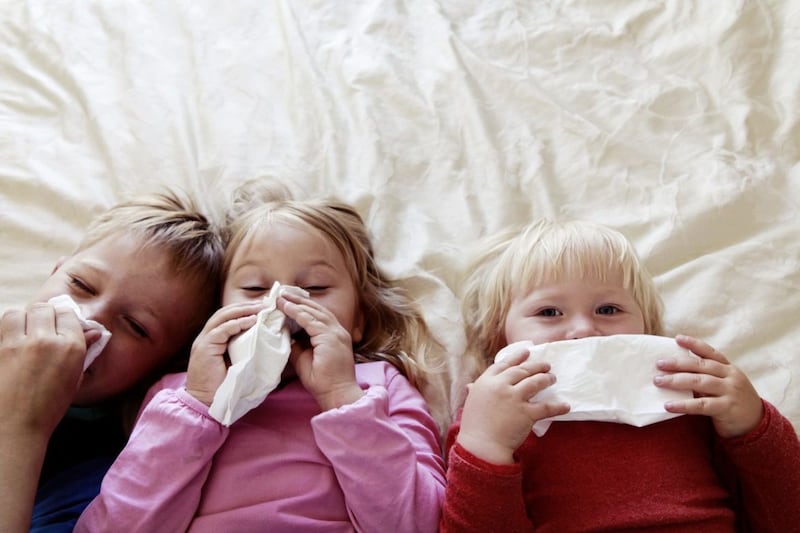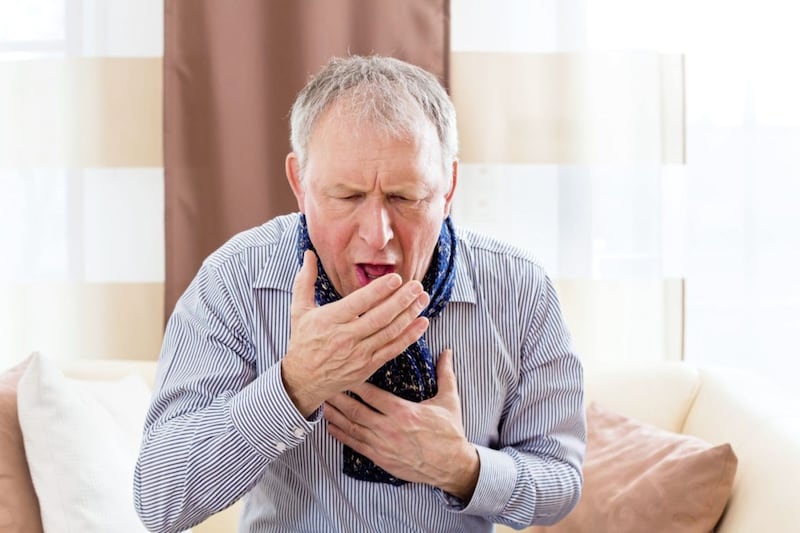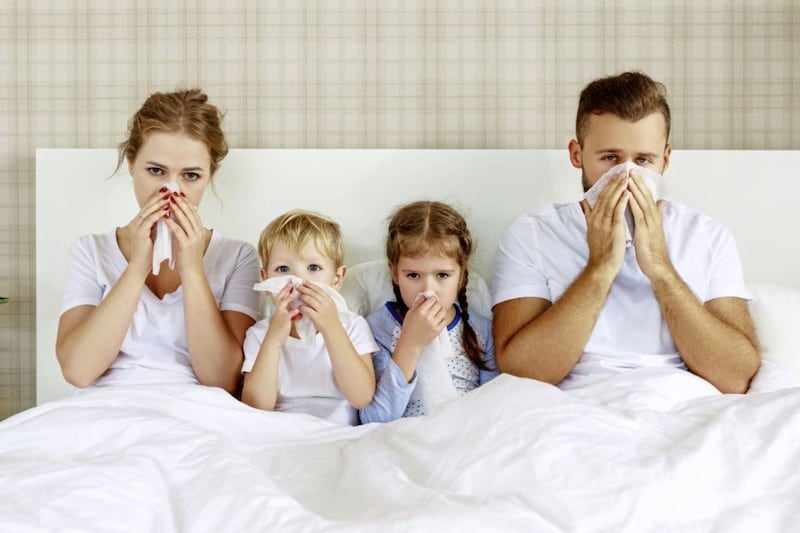ONE day you’re feeling fine, the next, your nose is running, you’re sneezing and your throat feels like you’ve swallowed broken glass.
Welcome to the annual cold season. Most of us will get between one and three colds each year, usually in autumn and winter, caused by one of more than 200 different cold viruses.
And there is little you can do about it – a cure for the common cold remains one of the holy grails of medicine – but better understanding of how these viruses spread could be the key.
What we do know for sure is that the first 24 hours are crucial; this is when the infection takes hold and starts to multiply, causing symptoms.
Here, with the help of three leading experts – Professor John Oxford, a virologist at Queen Mary University of London, Professor Ron Eccles, director of the Common Cold Centre at Cardiff University and Professor Peter Openshaw, a professor of experimental medicine at Imperial College London – we explain what is going on during the first 24 hours of your cold and what you can do to reduce the severity of your symptoms.
CATCHING a cold is about a combination of factors coming together; not only do you need to come into contact with the virus – for example, from a sneeze or a bug your child picked up at school – but the virus must also overcome your body’s own defences.
A single sneeze contains hundreds of millions of virus particles known as virions – each of which can trigger a cold.
"Depending on how far you are away from the sneeze, you may breathe in 10,000 virus particles, but only a few hundred will land on the exposed epithelial cells of the nose, throat and upper airway. These virus cells have evolved to invade the epithelial cells if they get the chance," says Prof Oxford.
The invading virus’s first hurdle is to run the gauntlet of the cilia, tiny hair-like cells dotted throughout the nasal cavity that move in a rhythm to sweep mucus and viruses down the throat and swallowed out of harm’s way.
Many millions of virus particles are also trapped in saliva and swallowed away.
Even those viruses that do reach the upper respiratory tract – the nose, mouth, throat and voice box – face another almost insurmountable obstacle. The epithelial cells that line these airways are so tightly bonded together, they usually provide an impermeable seal which keeps infections at bay.
"These cells also have sensors on their surface that detect the presence of hostile viruses and rapidly send messages to the cell to produce cytokines, chemical messengers that call in help from white blood cells and can also destroy the viruses themselves," says Prof Oxford.
"These stimulate the movement of virus-killing immune cells to sites of infection."
However, when we are over-tired, stressed or our immune systems are weaker than normal, cold viruses can get a foothold as these systems slow.
WHAT YOU CAN DO: Wash your hands using soap and water at regular intervals. Avoid rubbing your eyes with your hands, as this can transmit infection.
ONE TO TWO HOURS
By now the first symptoms – nasal dryness and irritation may be developing as the epithelial layer starts to break down. "Cold viruses disrupt and weaken the impermeable barrier by producing chemicals to open up the tight junctions between the epithelial cells, allowing viruses to penetrate to deeper within the airways," says Prof Oxford.
Where they settle depends on the type of virus that has infected you. Some viruses prefer the warmer environment of the upper lungs where it is 37C, while others focus on the nose and throat, partly because they prefer the lower 32C up there. That’s why some colds tend to cause more nasal symptoms," says Prof Openshaw.
WHAT YOU CAN DO: Some over-the-counter remedies may help your body stop the cold in its tracks at this early stage, according to studies. Vicks First Defence claims to reduce the chance of a full-blown cold by up to 50 per cent if taken at the first sign of symptoms, and can cut the severity of those symptoms by 40 per cent.
This viscous gel, works by trapping the virus and helping the body remove it. Professor Eccles says: "The concept is interesting and worth a try. The evidence for its effectiveness is not black and white, but it is supportive."
TWO TO NINE HOURS
Those viruses that have managed to overcome the body’s natural defences will start to infiltrate epithelial cells and replicate. "The speed of replication is astonishing," says Prof Oxford. "One infected cell becomes a factory for the viruses and can make millions of viruses within ten hours." You may also feel tired as your body gears up to fight infection, so rest is a good idea.
10 HOURS
It is now, as the virus infects more and more cells, that symptoms start to appear in earnest. As the virus invades nasal cells, these respond by producing chemicals including histamine and leukotrienes, part of the body’s natural immune response. Within hours, these chemicals are irritating and inflaming the lining of the nose, triggering sneezing – in an attempt to dislodge the virus.
The rest of the immune system also steps up its defences; white blood cells – the body’s guardians that can destroy invaders – start pouring in from around the body, and lymph nodes in the armpit and neck step up production of the white blood cells, so become swollen and painful to the touch.
WHAT YOU CAN DO: Applying a warm compress can provide relief – a clean flannel dipped into hot water and wrung out will do. Or take a painkiller such as ibuprofen.
11 HOURS
Cold viruses are now heavily established in the deeper levels of the epithelial cells and are moving through the bloodstream starting to interfere with the way cells work and creating symptoms like muscle ache. In particular, they affect genes that control cells in the nose and upper airway which produce and release mucus, causing over production as a way to ensure they can spread through airborne droplets – which is why people develop streaming noses and congestion in the sinuses.
WHAT YOU CAN DO: Don’t blow your nose too hard, which can drive infection into the canal that connects the upper throat, nasal cavity and ears.
12 HOURS
Coughing occurs when tiny nerve cells in the lining of the respiratory tract – known as pulmonary irritant receptors – become sensitised by too much mucus. These send messages via the vagus nerve in the chest to the brain, which in turn orders the diaphragm and intercostal muscles between the ribs to contract violently, causing explosive coughing. "Coughing actually has an important purpose," says Prof Eccles. "It’s your body’s way of keeping unwanted stuff from getting into your lungs."
The force of coughing rapidly damages the fragile epithelial lining of the respiratory tract, causing it to slough off and exacerbates a sore throat.
WHAT YOU CAN DO: "A hot drink such as honey and lemon will provide immediate relief from a sore throat and cough," says Prof Oxford. Gargling salt water may help to ease symptoms of a sore throat by reducing inflammation.
15 HOURS
As mucus builds, coughing and sneezing intensifies. "Mucus is an irritant but also blocks the airway so you have to cough to breathe," explains Prof Oxford.
WHAT YOU CAN DO: Take cough remedies that contain expectorants to break up excess mucus. "Use decongestants to relieve sinus pressure and ibuprofen to bring the temperature down."
18 HOURS
Dehydration caused by mucus production and a higher body temperature (when we are sick, the hypothalamus in the brain may set the body to a higher temperature, thought to help kill off the virus) can lead to hoarseness, dry lips and tongue. A build-up of chemicals produced to help the body fight infection can also cause headaches. "As these proteins pass through the blood brain barrier, they have a toxic effect," explains Prof Oxford.
WHAT YOU CAN DO: Chicken soup, hailed for hundreds of years as a cold remedy, might help. A US study in 2000 found that chicken soup dampened down the movement on neutrophils – a type of white blood cell – suggesting it could be anti-inflammatory.
24 HOURS PLUS
A small proportion of people will go on to develop more serious problems – around one in 100 will get a more serious secondary bacterial infection in the lungs that can cause pneumonia, says Prof Eccles. Congestion and build-up of mucus in the sinuses and eustachian tubes can cause a bacterial infection of the middle ear, or sinusitis.
For most, however, cold symptoms peak within three days. "After that, most immune systems can start to turn the tide on the virus and wipe it out, but not without millions of white cells being killed by the virus in the process. This is possibly why mucus tends to get thicker and take on a greenish tinge," says Prof Openshaw. "That’s usually when you start to feel better."
PROTECT YOURSELF
"Wash your hands often, particularly after using public transport, and avoid rubbing your eyes and nose because infection can spread through hand-to-hand contact and even touching an infected surface," advises Prof Oxford.
However, taking vitamin C or echinacea to prevent a cold, or sleeping in a different bed from your partner if they have a cold, won’t make any difference, he says, since you are living in close proximity to them.
© Solo dmg media








